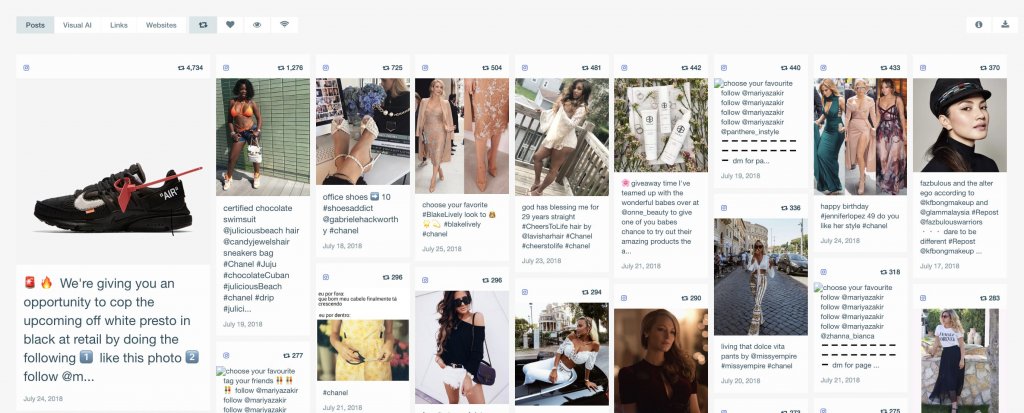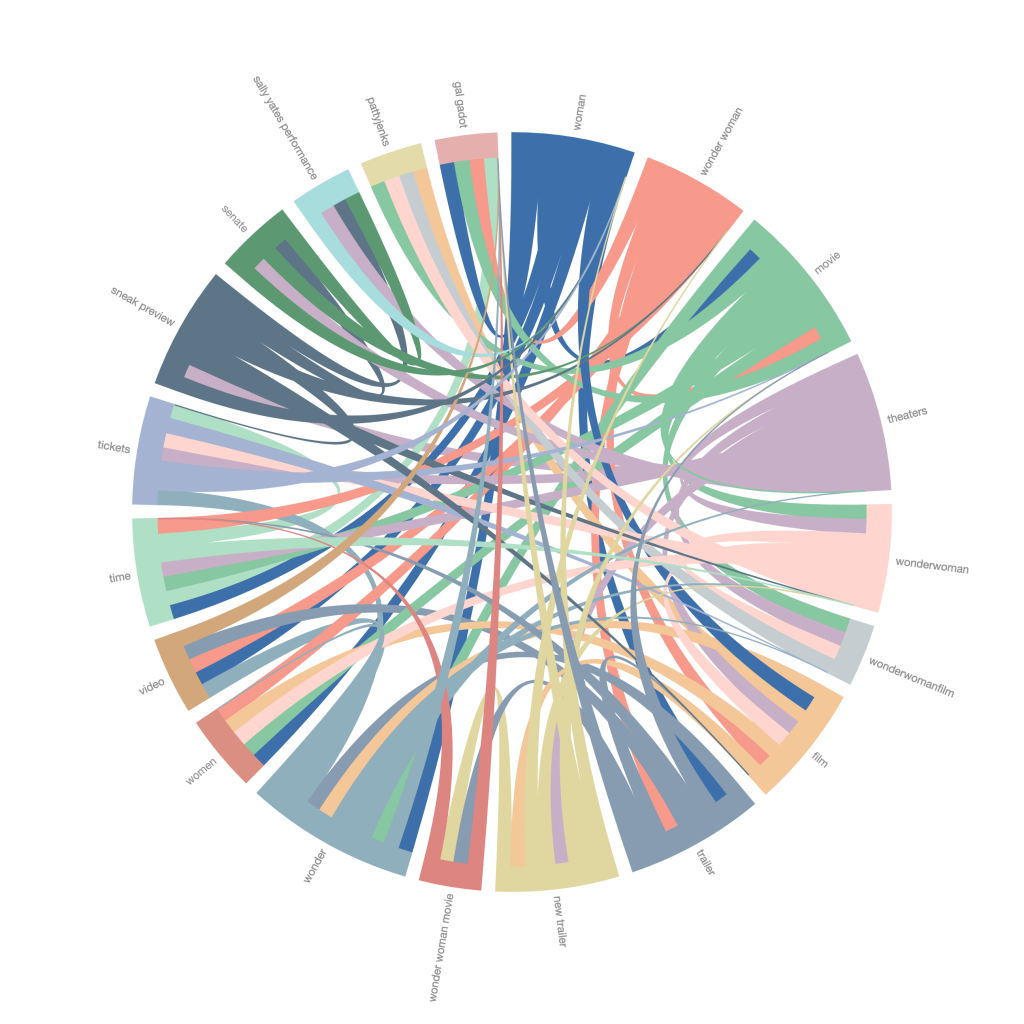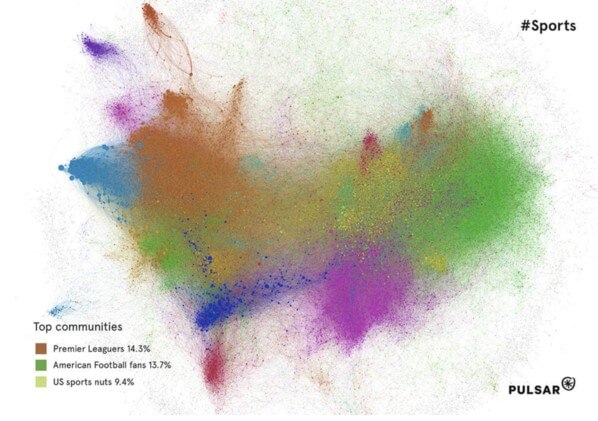What is Audience Intelligence?
Audience intelligence is about obtaining and understanding audience insights, identifying marketing strategies to target these audiences based on insights. It is the key to figuring out what does and doesn’t resonate with an audience based on behavior, moments and topics people care and talk about all the time.
At Pulsar audience intelligence is the evolution of social listening, to understand the potential of being able to understand the all-digital signals of your audience online. We actively look to procure insights into behaviors, moments and topics on social media and the social web to help segment audiences and make it easier to create targeted marketing and product campaigns.
Audience insights that tell you about the behaviors, opinions and lifestyles of your target audience can benefit targeted marketing campaigns, product development, advertising, content creation and curation and much more. Audience intelligence tools offer audience insights at both industry and individual levels, allowing brands and agencies to pinpoint lucrative potential within the market.

Table of content:
- Why is audience intelligence important?
- What business cases can Audience Intelligence help with?
- What is the difference between audience intelligence and social listening?
- How to get started using audience intelligence
- How to use audience intelligence for audience segmentation
- How audience intelligence can help you identify influencers and micro-influencers on social media
Why is audience intelligence important?
As more and more of life shifts online, it is important to understand how people are moving in these digital spaces. Aggregating data and understanding audiences allows humans to understand one another online, both for academic or business purposes.
Brands or agencies who make the most of audience insights by using audience intelligence platforms like Pulsar to gather data are capable of connecting with their audience on a personal level. By understanding their audiences this way, they significantly increase their chances of grabbing their attention.
For instance, Pulsar CORE allows you to benchmark against your competitors and monitor how your social media content is performing.
Brands and agencies that ignore the benefits of audience intelligence at a more granular level and instead focus on targeting wider, more generic, groups and demographics face being crowded out of the market. As the number of digital noise increases, brands and agencies need to hone in on their audience with more precision or face getting lost in the digital space.
Audience intelligence is essential when taking into account the digital environment and the increasing number of consumers moving towards the use of digital platforms and online devices.
What business cases can Audience Intelligence help with?
Identifying marketing opportunities
When building a new marketing strategy, it’s important to grasp a full understanding of the market in question – something audience intelligence can solve.
What channel, or channels, are your audience engaging with the most? Are there specific hashtags being used by your audience that you should be aware of – if so, what are they? What other passions or interests do your audience have besides the content you’re distributing?
Independent, objective audience-intelligence-based marketing research and measurement will quantify your marketing campaign performance and identify opportunities to grow engagement, reach and ROI.
Audience discovery and segmentation
Without knowing your audience well, you can never be certain your products or campaigns will be reaching those who are most interested in your brand. It’s time to find out who you’re looking to reach, who you want to reach and how you target them.
When discussing your products, what kind of language is being used by your audience? At what time of day is your audience posting or surfing online? How does your audience vary based on geographical location?
Discover the key segments and personas in your audience with real-time cluster analysis based on affinities, behaviors, and demographics on platforms like Pulsar.
Developing creative assets
Great campaigns are built on deep human truths – and that’s exactly what audience intelligence provides the answers to.
What are the unique characteristics your audience shares that separate them from your competitors and the rest of the digital population? What media publications are your audience interested in and sharing with one another? What keywords are being used by your audience when referring to your products or services?
Dive into your customer’s world with our creative planning research which can help you tap into the mindsets of your audience and craft the messages, imagery and experiences that click.

What is the difference between audience intelligence and social listening?
The key difference between social listening and audience intelligence is in scale – with audience intelligence being an evolution of social listening, utilizing a wide range of signals to understanding an audience, and social listening offering signals from social media only.
Social listening focuses on monitoring digital conversations on social media to understand what customers are saying about brands and industries – gauging audience behaviors, preferences and demographics through moments, sentiment analysis etc.
Audience intelligence is the ability to gain insights into audiences, through social listening and other data sources, and as a result discover what is and isn’t working for your brand to help produce new products, develop new marketing techniques or reform your audience strategy. Many analytics platforms such as Facebook, Twitter and Google Analytics – as well as audience intelligence platforms like Pulsar which help you understand several digital signals in one place – offer these insights.
How Audience Intelligence helps you to understand your social and online audience
There has been a dramatic increase in the amount of content being created for online and social media audiences in recent years – but for brands and agencies looking to reach their audience ahead of competitors – this can be problematic.
What isn’t growing is the audience at which these ads are aimed at – nor the time audiences have to digest and engage with digital content. It’s one of the primary reasons that social platforms such as Facebook have created algorithms encouraging relevant content to appear for users when they’re active on their accounts. For many new campaigns, breaking through the plethora of social noise can be a struggle.
Audience intelligence ensures that you are equipped with the insights necessary to break through the increasingly saturated content space to reach the audience you want to speak to. If your content is dedicated enough, audiences are highly likely to come across it – and you’ll be answering the questions they have based on what you already know about them. It’s that simple.
How to get started using audience intelligence
To begin using audience intelligence, you should have at least a vague understanding of your target audience. This will ensure you can collect audience intelligence data with more precision and reduce the risk of being bogged down by a plethora of data – some of which could be irrelevant.
Audience intelligence tools allow you to streamline noise and focus in on the audience you are trying to reach. They can help you segment and hone in on a specific audience – and this is when you can start to focus on specific audience demographics, behaviors and preferences.
With a vague understanding of your audience – you can use social listening tools, free analytics tools such as Google Analytics and social media analytics tools to identify which specific audience segment is engaging with relevant content to your brand, discussing topics relative to your industry, or engaging with similar audience groups (some of which you might not already know).
These audience insights can be applied across entire companies and industries, whether that’s new product development, research and insights, or to create the narrative and themes that lead to the creation of impactful marketing content.
What insights can audience intelligence extract from social data?
Thanks to audience intelligence tools, brands and agencies can still connect with their dedicated audience. For instance, audience intelligence lets you identify behavioral aspects of your audience in order to understand how they will react to various posts, as well as their preferences and the content they’re most likely to engage with.
When a certain topic – such as politics – becomes the talk of the town, audience intelligence tools highlight these trends and provide you with the audience insights necessary to tailor marketing campaigns that are more accurate and precise.

How to use audience intelligence for audience segmentation
Segmenting audiences is one of the most important parts of using audience intelligence tools properly. This allows you to break down supposedly monolithic audiences into various age groups, job titles, and other behavioural and psychographic details, helping you to truly understand what this audience looks like.
There are several ways to start understanding segments of audiences – and the easiest way is to read studies already done by audience intelligence experts, or looking at brands or social media accounts with large followings to find a way to break down the audience into segments.
Luxury brands are already getting plenty of love and affection from their audience which creates a fruitful resource to tap in to. For anyone keen on using audience intelligence to benefit their brand, understanding an audience who is interested in a brand like this should be seen as an easy way to learn.
Within the data and audience insights that can be gleaned from an account with a large engaged following, you can delve into the preferences, motivations and behaviours that separate your audience into further sub-communities – also known as audience passion networks. This information makes it easier to refine your audience and dedicate campaigns to specific sub-communities.
Passion networks and affinities are an interesting way to understand audience intelligence segments. This is a way of dividing audiences based on specific interests that can include sport, tv & film, politics, fashion, technology etc. We recently put together a Twitter Passion Report on the sports passion community – discovering that sub-communities within the sports passion network can be distinguished primarily based on geographic variances (American sports popular in the US).

As well as dividing your primary audience in this way, audience intelligence also helps you define each sub-community. Once you have your audience segmented, you can hone in on their behavioral aspects, including their geographical location, identify micro-influencers they engage with online and the products, trends and ideas that are shaping their preferences.
With all this information taken into account, you can be to create audience personas that play a vital role in the creation of your newly inspired ad campaigns. With audience intelligence tools you can personalise your campaigns to effectively connect with each audience segment.
How audience intelligence can help you identify influencers and micro-influencers on social media
Influencer accounts in your category or industry are key to understanding audiences within social media. You can identify influencers and micro-influencers relevant to your brand by listening out for their online conversations using social listening and audience intelligence tools. These conversations should be related to your business itself, your product or the service you are providing.
Influencers are identified as accounts with over 10,000 followers, who readily accept advice and recommendations from the influencer account. These accounts could be celebrities or social media stars such as YouTubers.
Micro-influencers, however, are accounts with usually more niche followings – for instance raw vegan food bloggers, instead of a generic ‘foodie’ account – who have smaller, but more influential accounts in these areas. They readily seek out online interaction through reviews, recommendations, customer experience, expecting customer service and more.
With audience intelligence tools you can measure the influence of an individual on social that’s discussing your brand and the impact of their posts. Ideally, you want to be sure you’re monitoring people with plenty of engagement on their social channels – and are therefore generating a considerable amount of reach.
You can use audience intelligence tools to track and monitor these individuals and gain a better understanding overall of their influence on your audience. Using these tools it should be easy to gain a list of influencers and micro-influencers – which can be helpful to understand which are most significance to your brand and using these panels you can either conduct research into the impact of your marketing or reach out to influencers for joint campaigns.
Audience intelligence tools
There are a large number of tools out there which can help you understand your audience better. Here we’ve combined some of the best and some free audience intelligence tools to get you started with your campaigns:
Twitter Analytics
Using the data provided by Twitter analytics, you can understand how the content you share on Twitter grows your business. Using the Twitter activity dashboard you get an overview of the metrics associated with each and every one of your tweets – helping you discover what worked well and which posts resonated with your audience best.
Facebook Audience Insights
Facebook Audience Insights offers detailed information about two separate groups– those connected to your page and individuals on Facebook – which allows you to build content that suits your audience, as well as easily identify more individuals similar to the ones in your existing audience.
Google Analytics
Understanding the demographics, behaviors and interests of your website visitors improves your online marketing – and Google Analytics’ dedicated Audience section shows valuable audience data that you can reflect in your marketing strategy. The nine separate reporting sections under Audience include a user-friendly sessions graph and a table chart that shows the acquisition, behavior and conversions data for each group.
Pulsar
Then, of course, there’s us! Pulsar is fully equipped to take social listening potential to the next level – offering audience intelligence solutions to brands and agencies. With Pulsar you can segment your audience and tailor campaigns to seamlessly resonate with those most interested in your product.
Ok, how do I check it out?
If you’re not a client yet, go ahead and book a demo to get a quick tour of our audience intelligence platform, including this integration.
If you are already a user of one of our products and want to give TRAC, CORE, TRENDS, or our research offering a try, get in touch with your account manager and we’ll hook you up pronto.

